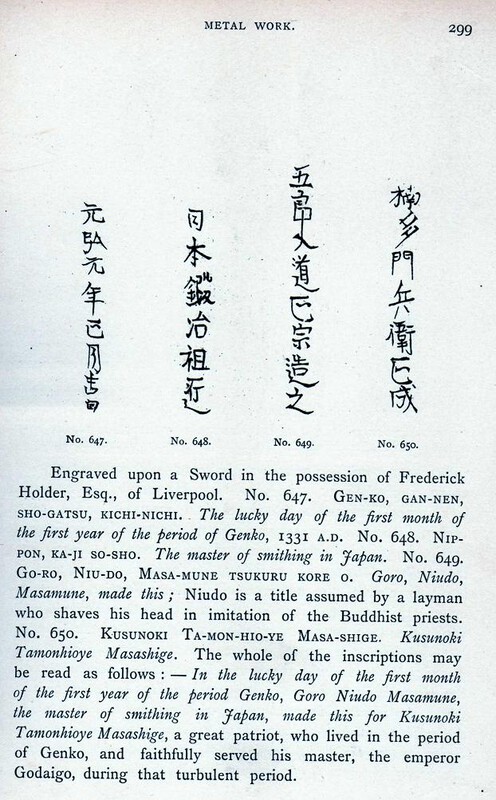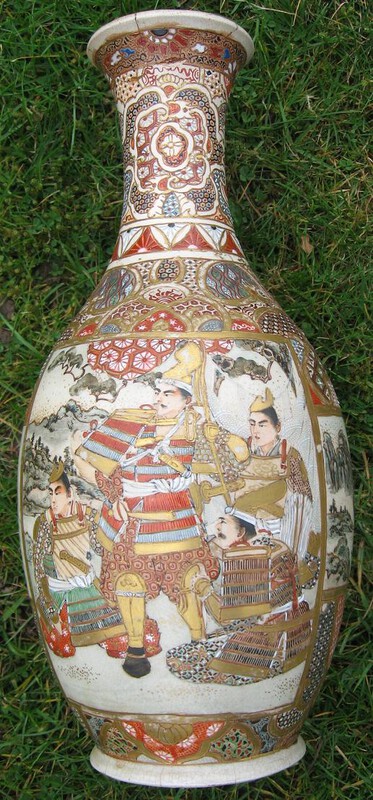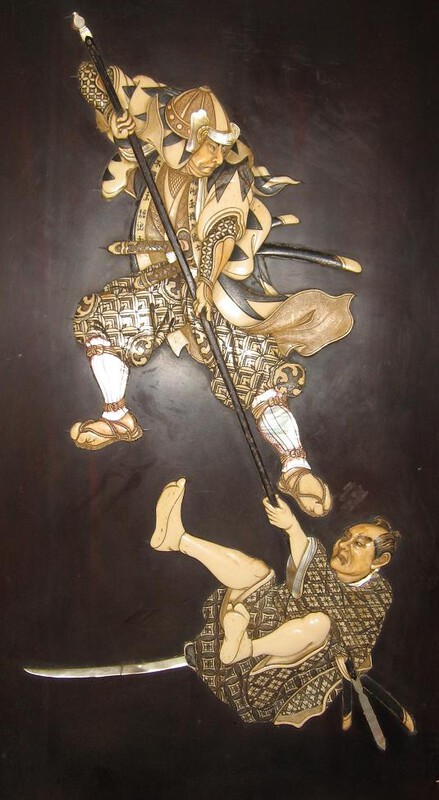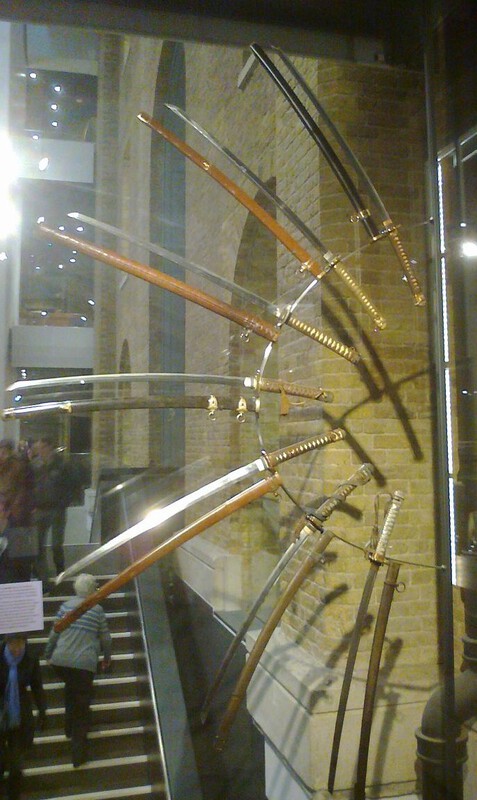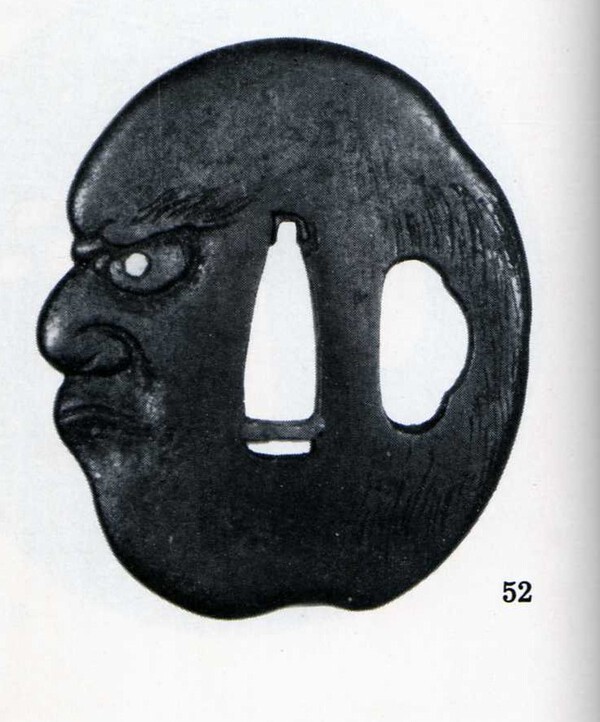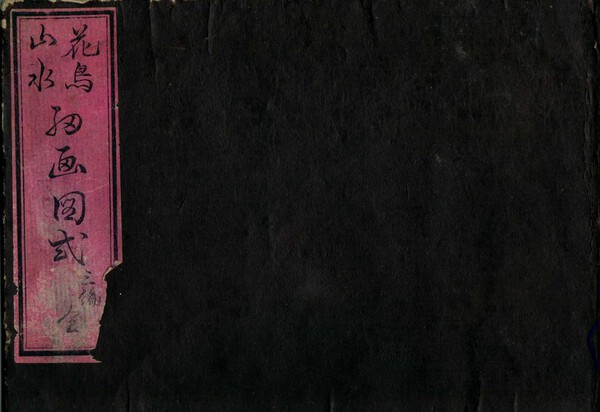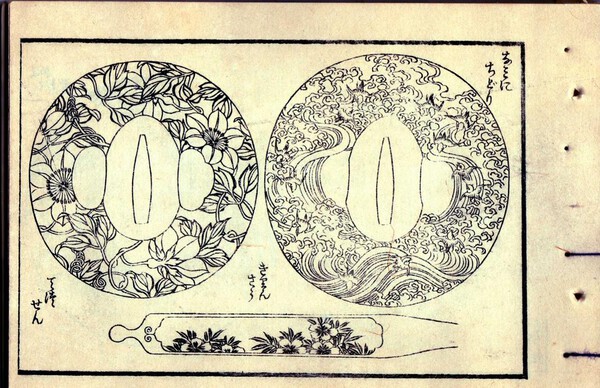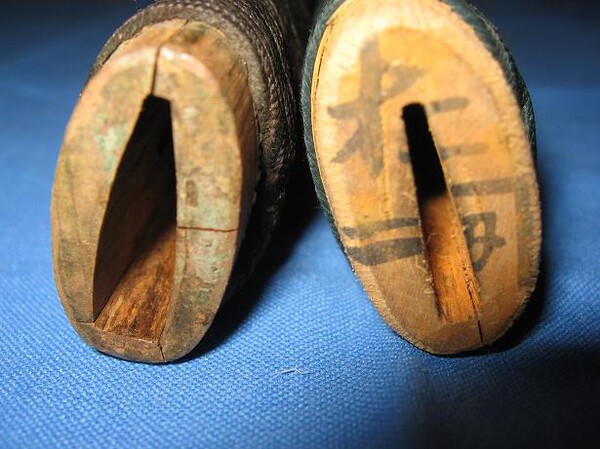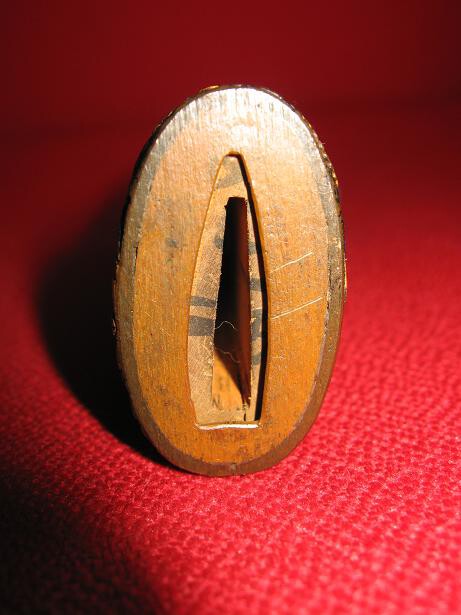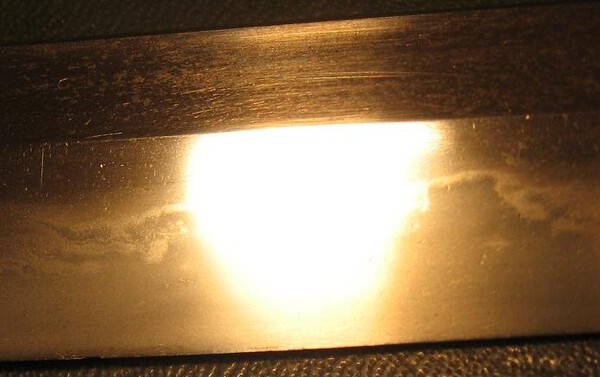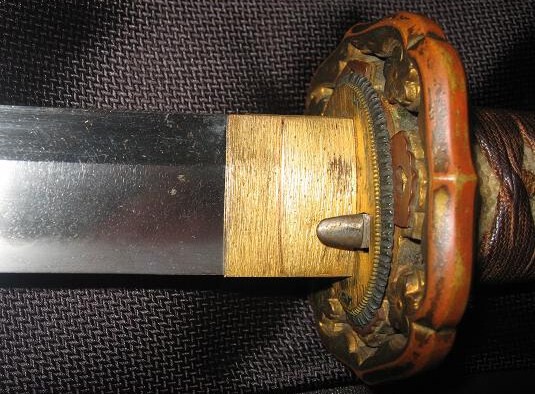-
Posts
198 -
Joined
-
Last visited
Everything posted by Davis
-
Nicely summed up Pete. The page is copied from a book published in 1882, the vase was purchased at a flea market for a couple of pounds. They perhaps illustrate the range of "art" that came to the UK in the Victorian/Edwardian eras. In the UK "export" art can still be found in abundance and cheap too. Mick
-
Thanks Steve for your interesting and thought provoking comments. Victorian England was fascinated with Japan. Writers such as Mitford and Satow wrote of their experiences and captured the public's imagination. Collecting Japanese "art" was very popular with those that could afford to do so. The late 19th and early 20th century saw huge quantities of this "art" arriving in the UK. Some of this was indeed treasure such as arms and armour once prized but now discarded. Much more though was "art" created specifically for the western market. This panel falls into the later category. The politically correct of this world might also view it as just a display of random violence from a bygone age. To me though it is much more than that. It's creator has used some remains of once living things and brought them to life again albeit in a different form. It reveals a hidden tale of honour, loyalty and self sacrifice. It might be just another tourist piece but I would still regard it as art. It's pleasing that some of you would agree. Thanks for your responses. Mick
-
Thank you Morita san for identifying the subject. The panel is housed in a wooden frame and measures 82cms x 47cms. The materials used are ivory, bone and shell. As said, art as in beauty is in the eye of the beholder. Although I'm not sure Pete how this piece can be enhanced by velvet? Mick
-
Good Morning all Brian, it's a great idea to create this separate section. I'm looking forward to using it and improving my very limited knowledge in this field. I'm posting a picture of a decorative panel that was made for the tourist/export market, probably during the Meiji period. To me it conveys movement and momentum but can it be considered as art? Does anyone have any thoughts? Mick
-
Hi Eric For what it's worth. The brass habaki was on a very good sword that I once owned. It was acquired by an American Colonel in Japan c.1945. The Colonel was subsequently based in England and passed the sword to a friend of mine in the 1960's. The friend passed the sword to me 27 years ago. It wasn't Chinese. Unfortunately, the only photos I now have don't show the quality of this fine blade. This picture though might give you some idea. Mick
-
Hi Eric Getting back to your original post "materials used for habaki through the ages." I've often marvelled at the workmanship that goes into the making of habaki and would like to learn more on the subject myself. The majority of swords I have encountered have had habaki made from copper. I have also handled and owned swords with solid silver habaki but they have been few and far between. Usually they have been mounted on very good shinshinto blades. I'm posting pictures of two solid silver habaki, one solid brass and one double habaki, silver wrapped over copper. Perhaps other members could post pictures of habaki on swords they have and give details as to materials used, design and classification. Regards Mick
-
The Imperial War Museum, London, had in it's reserve collection at one time over 100 Japanese swords. I'm not sure how many they have now but on a recent visit there I found just eight on show. Seven of these were displayed as shown in the attached picture. If anyone wishes to find more on the Nobuo Fujita story they might wish to google Offbeat Oregon. The article of 13th May 2013 "The flying Samurai who attacked Oregon" has an excellent picture of Nobuo Fujita presenting his sword. Mick
-
Thanks to your assistance I believe I've been able to locate a reference to this artist. I think he is Naito Akimatsu who was registered in the Tokyo Sculptor's Society:List of Ivory Carvers working 1904 - 22. What I describe in my post as a plaque is actually a lacquer panel depicting samurai made from ivory and shell. Thanks again for you help. Mick
-
Thank you both for that information. Armed with that I can go through my reference books again. Mick
-
-
Good Afternoon All I'm trying to get used to this new layout and thought I might use it to ask for some assistance. Can anyone translate these seals for me which are on a Meiji period plaque? Many Thanks Mick
-
Brian As an old technophobe it seemed a bit daunting at first but I've spent the last couple of days navigating the site, trying some of the new features and getting to grips with them. Overall, excellent. The hard work and effort that you have put in has provided us with an excellent forum. Thanks Mick
-
Something very slightly simiiar. This was lot 52 sold at Christie's, London, 30th October 1973. It was from the collection of Daniel Grataloup. " A kashira-gata iron tsuba carved as Daruma, the eyes inlaid in gold - 6cm. unsigned, 18th century" Sold for 55 guineas. Mick
-
Thanks Brian, you don't often see such as these coming onto the market, when they do they usually command very high prices. Mick
-
An interesting lot that was coming up for auction at East Bristol Auctions http://www.eastbristol.co.uk on 6th December seems now to have been withdrawn. Lot 1210, five fascinating photos of Japanese dignitaries c.1862. It would seem from the reverse of the pictures that they were taken in studios at London's Regent Street. Mick
-
Brian The NMB is a mine of information and incredibly it's free. I would like to contribute but being a dinosaur I never use my credit card online. However, if you run a raffle this year I will offer these two items as a single prize and post them free of charge. The "Old Japan" catalogue comes with a price list but is about ten years old. The little booklet has about a third of it's contents devoted to artwork for tsuba etc., Mick
-
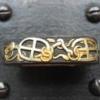
Notice from Kazushige Tsuruta
Davis replied to BIG's topic in Sword Shows, Events, Community News and Legislation Issues
Stephen That's a great school! Really made me laugh. Mick -

Notice from Kazushige Tsuruta
Davis replied to BIG's topic in Sword Shows, Events, Community News and Legislation Issues
I share some of Ron's pessimism. He cites ivory as an example. Here in the UK a popular TV programme "Antiques Roadshow" will no longer feature antiques made from it. Prince William has stated that he wishes to destroy all the ivory in the royal collections - amounting to 1,200 artifacts. Chiswick auctions of London has been fined for selling it and vow never to sell any again. I like okimono but would never buy them now - the writing is on the wall! I believe good arms and armour in excellent condition will always sell but the market is shrinking. In my boyhood days boys often carried penknives and catapults, boy scouts wore sheath knives, we would also make wooden swords and shields and have pitched battles. Now such things are frowned upon and even legislated against. Real history is no longer taught in schools so it's no wonder that many young people are no longer drawn into the this field of collecting. Mick -
Mike, Lee The one I have is not mounted. The recess is 7cm. deep and at a glance would suggest a very delicate nakago on the "blade" it once held. Certainly not functional. Mick
-
Lee Interesting. I can't add much to this but I do have a tsuka similar to the description you give. I enclose a couple of pics. Mick
-
Good Afternoon Here are details of two military swords that were returned/presented to former enemies in acts of reconciliation. The late Lord Bernard Weatherill, one time speaker of the British House of Commons returned the Japanese sword he had acquired in 1945, to Japan in 1992. I contacted him at that time and he told me the sword was to go on display at Yasukuni Shrine. Former IJN submariner/pilot Nobuo Fujita (1911-97 ) presented his 400 year old ancestral sword to the town of Brookings, Oregon U.S.A. in 1961. His story is extraordinary, he was the pilot of the only aircraft to bomb the United States mainland during WW2. He also flew reconnaissance missions later in the war over both New Zealand and Australia. I believe that his sword is still on display in Brookings. There are many photos of this presentation on the internet, I would post some of them here but I'm not sure of the copyright issues etc., Mick
-
-
Chris I'm posting some more pictures. I don't feel this blade is anywhere near the same level as the previous one discussed. The pictures might indicate rust but there is none. Likewise it might look as though it's been scoured with wire wool but that I think is due to the course itame hada. It's in remarkably good condition, especially as it's been carried to war and must be in excess of 500 years old - Koto. I would very much appreciate your opinion on this as I am eager to learn - is this how old it is? Mick
-
Thanks Hoanh, it might read Fujishima. Mick


